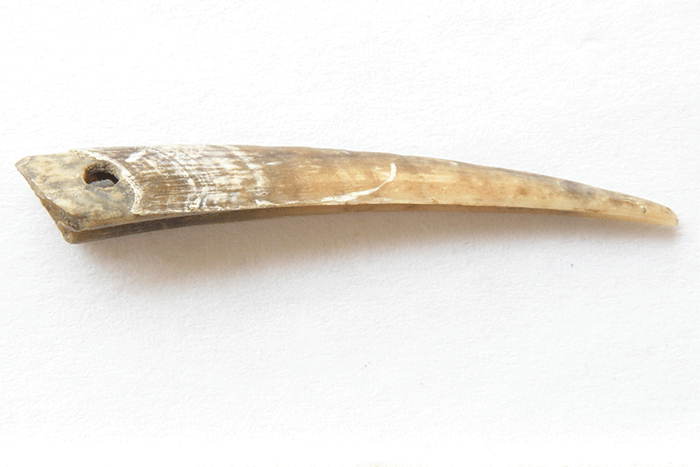Ancient Beak Discovery Links Kent’s Red-Billed Choughs to Anglo-Saxon Past
1,400-year-old pendant made from a Chough’s beak reveals deep cultural ties – as the species takes flight in Kent once more

An extraordinary link between past and present
Archaeologists have revealed that a beak unearthed from a 1,400-year-old Anglo-Saxon settlement in Kent belonged to a Red-billed Chough. The discovery provides an astonishing cultural link across the centuries, tying the bird’s modern return to its historic presence in the region.
The faded 4cm beak, worn as a pendant, was recovered from a sixth-century building in the village of Lyminge during excavations in 2013. Last month, it was formally identified by Hein van Grouw, Bird Curator at the Natural History Museum in Tring, Hertfordshire, as coming from a Red-billed Chough.
Known for their glossy black plumage and distinctive crimson bills, Choughs are immortalised on Canterbury’s coat of arms. After more than 200 years of absence, the first wild-bred Choughs to fledge in Kent in two centuries successfully took flight this week.
A treasured symbol in Anglo-Saxon Kent
Professor Gabor Thomas, who discovered the beak during excavations of the settlement, described the find as “an extraordinary story that spans fourteen centuries.”
“To think that 1,400 years ago, someone at Lyminge valued a Chough's crimson beak so much they turned it into a pendant and wore it around their neck – it shows just how deeply embedded these birds were in Kent's cultural landscape,” he said.

“The fact that we’re now celebrating the first wild Chough to fledge in Kent for over two centuries makes this discovery even more poignant. It’s remarkable proof that our connection with these charismatic red-beaked birds isn’t just recent folklore – it runs right back to the very foundations of the Anglo-Saxon kingdom of Kent.”
Modern reintroduction effort
The Red-billed Chough’s modern return is thanks to a reintroduction programme led by Wildwood Trust, Kent Wildlife Trust and Paradise Park, which aims to release up to 50 birds across the South East over five years.
This year’s milestone fledging is a major boost for the project, launched just three years ago, and signals that the species is beginning to re-establish itself naturally in the region.
The site’s remarkable history
The Lyminge settlement, which became a royal centre and monastery in the 7th century, was excavated by University of Reading archaeologists between 2007-15 and again in 2019.
Research has revealed that the site endured repeated Viking attacks yet resisted collapse for nearly a century, highlighting its resilience and significance in early medieval Kent.
August 2025
Share this story







